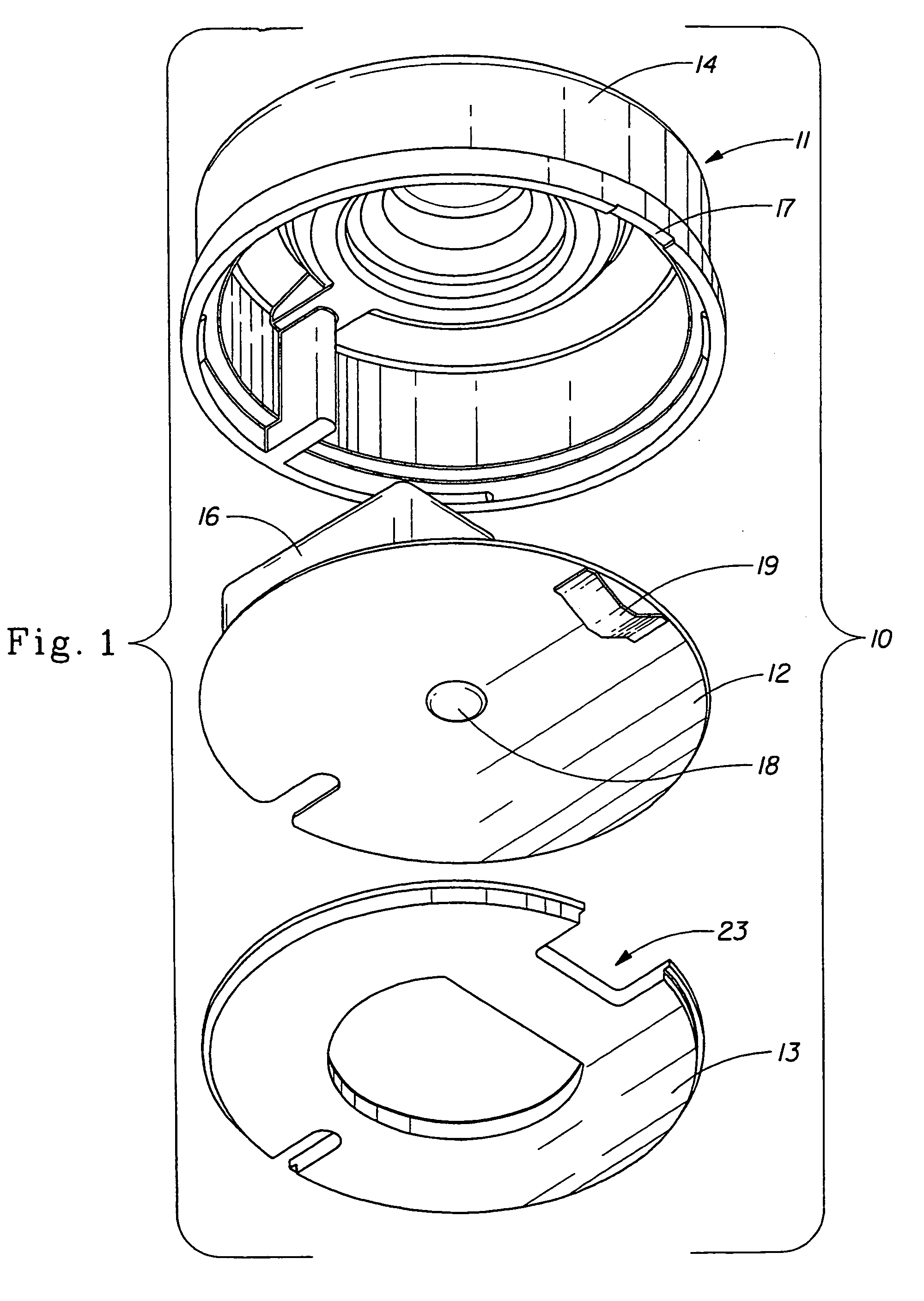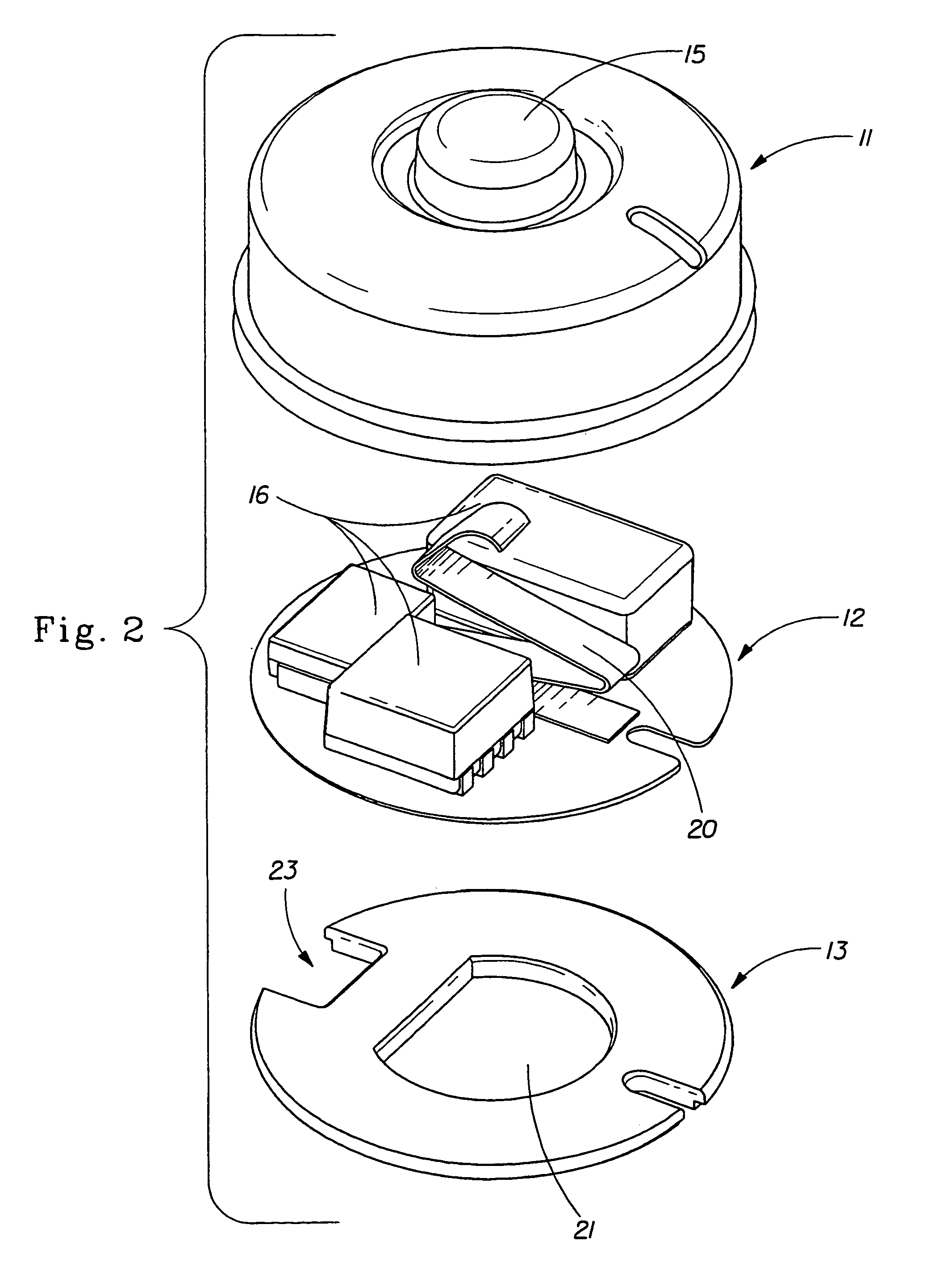Battery having a housing for electronic circuitry
a battery and electronic circuit technology, applied in the field of batteries, can solve the problems of increasing the demand on batteries to provide greater utilization of stored energy, increasing the complexity of electronic devices, and increasing the complexity of devices
- Summary
- Abstract
- Description
- Claims
- Application Information
AI Technical Summary
Benefits of technology
Problems solved by technology
Method used
Image
Examples
Embodiment Construction
[0012]The present invention provides a housing for electronic circuitry that is affixed to a consumer battery. The term “battery,” as used in this application, refers to a container having terminals and a single electrochemical cell, or a structure that has terminals and at least substantially contains two or more electrochemical cells (e.g., a standard 9 volt battery or a battery for a cellular telephone or laptop computer). The electrochemical cells need not be completely enclosed by a single structure if each cell has its own individual container. A portable telephone battery, for example, may contain two or more electrochemical cells that each have their own individual containers and are packaged together in a shrink-wrap plastic material that holds the individual containers together but may not completely enclose the individual containers of the cells. The term “consumer” in this application refers to a battery that is intended to be used in an electronic or electric device pur...
PUM
| Property | Measurement | Unit |
|---|---|---|
| voltage | aaaaa | aaaaa |
| output voltage | aaaaa | aaaaa |
| translucent | aaaaa | aaaaa |
Abstract
Description
Claims
Application Information
 Login to View More
Login to View More - R&D
- Intellectual Property
- Life Sciences
- Materials
- Tech Scout
- Unparalleled Data Quality
- Higher Quality Content
- 60% Fewer Hallucinations
Browse by: Latest US Patents, China's latest patents, Technical Efficacy Thesaurus, Application Domain, Technology Topic, Popular Technical Reports.
© 2025 PatSnap. All rights reserved.Legal|Privacy policy|Modern Slavery Act Transparency Statement|Sitemap|About US| Contact US: help@patsnap.com



